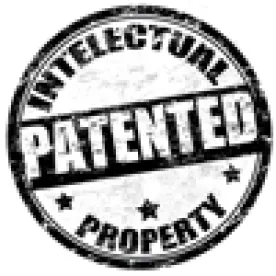Takeaway: In order to satisfy the financial product or service requirement of a covered business method patent, the patent must be related to a financial activity, but does not have to be used specifically in the financial or banking field.
In its Decision, the Board denied institution of covered business method review because Petitioner did not demonstrate that it is more likely than not that any of the challenged claims (1, 3, 11, and 13-15) of the ’720 Patent are unpatentable. The ’720 Patent relates to “a portable data carrier for storing and paying for data and to computer systems for providing access to data to be stored” and the “corresponding methods and computer programs.”
The Board began with claim construction, stating that claim terms are given their broadest reasonable interpretation in light of the specification. The Board only found it necessary to construe “use rule” and “access rule.” The Board noted that the specification gives the same meaning to both terms, and construed both as a rule specifying a condition under which access to content is permitted.
The Board then discussed whether the ’720 Patent is a “covered business method patent,” which is one that “claims a method or corresponding apparatus for performing data processing or other operations used in the practice, administration, or management of a financial product or service, except that the term does not include patents for technological inventions.” Only one claim of a patent must be directed to a covered business method to be eligible for review.
The Board began by discussing whether the ’720 Patent is directed to a financial product or service. Petitioner asserted that claim 14 describes transferring money as well as restricting access based on payment, therefore, it relates to a financial activity. The Board agreed with Petitioner and disagreed with Patent Owner’s assertion that a financial product or service should be limited to only technology used specifically in the financial or banking industry.
Next, the Board discussed whether the ’720 Patent falls within the exclusion for technological inventions. Petitioner asserted that claim 14 does not fall within the exclusion because it does not recite a technological feature that is novel. Patent Owner disagreed, but the Board sided with Petitioner and found that claim 14 as a whole does not recite a technological feature that is novel and unobvious over the prior art, and instead makes clear that the asserted novelty of the invention is the method of controlling access to the data and the problem being solved is a business problem – data piracy. Therefore, the Board found that the ’720 Patent is eligible for covered business method patent review.
The Board then turned to Petitioner’s argument that claim 1 is anticipated by Stefik, or rendered obvious by Stefik alone or in combination with various other references. The Board focused on claim 1’s disclosure of “use rules,” which Petitioner asserted corresponds to Stefik’s conflict rules and usage rights. The Board found that Petitioner provided insufficient explanation as to how Stefik’s usage rights operate or why usage rights satisfy use rules. Claim 1 also requires “use status data,” which Petitioner asserted corresponds to Stefik’s conflict rules and usage rights. Again, the Board found that Petitioner did not sufficiently explain how Stefik discloses the limitation.
Next, the Board examined claims 3, 11, and 13, which Petitioner again asserted are anticipated by Stefik or rendered obvious by Stefik alone or in combination with various other references. The Board noted that claim 3 requires an “access rule,” which has been construed to have the same meaning as “use rule.” For the same reasons as in claim 1, the Board found that Petitioner did not show how Stefik discloses an “access rule.” The Board noted other limitations in claim 3 that Petitioner also did not sufficiently explain how they are disclosed in Stefik. Because claims 11 and 13 depend from claim 3, the Board found that Petitioner had failed to demonstrate that they are unpatentable as well.
Finally, the Board turned to claims 14 and 15, which Petitioner asserted are anticipated by Stefik or rendered obvious by Stefik alone or in combination with various other references. Again, claim 14 requires an “access rule,” which the Board found, for the same reasons above, that Petitioner had not sufficiently shown is taught by the prior art. Because claim 15 depends from claim 14, the Board also found that Petitioner failed to establish that claim 15 is unpatentable.
Apple Inc. v. Smartflash LLC, CBM2014-00104
Paper 9: Decision Denying Institution of Covered Business Method Patent Review
Dated: September 30, 2014
Patent: 7,334,720 B2
Before: Jennifer S. Bisk, Rama G. Elluru, Neil T. Powell, Jeremy M. Plenzler, and Matthew R. Clements
Written by: Elluru
Related Proceedings: Smartflash LLC v. Apple Inc., No. 6:13-cv-447 (E.D. Tex.); Smartflash LLC v. Samsung, No. 6:13-cv-448 (E.D. Tex.); CBM2014-00105; CBM2014-00102; CBM2014-00103; CBM2014-00106; CBM2014-00107; CBM2014-00108; CBM2014-00109; CBM2014-00110; CBM2014-00111; CBM2014-00112; CBM2014-00113



 />i
/>i

